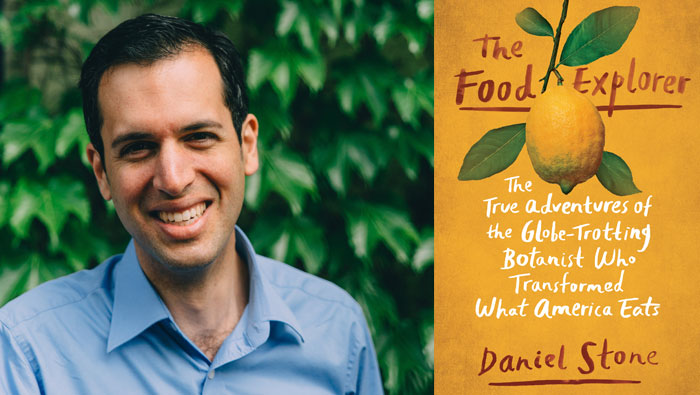
If you’ve ever marveled at your local produce stand, you’re already familiar with the legacy of David Fairchild. The 19th-century American botanist traveled the globe to bring hundreds of exotic foods to the United States. National Geographic senior editor Daniel Stone ’07 documents Fairchild’s experiences in The Food Explorer: The True Adventures of the Globe-Trotting Botanist Who Transformed What America Eats (Penguin Random House, 2018). Stone sat down with Lamar Heystek ’01, M.A. ’05, to talk about his first book.
Lamar Heystek: How did your time at UC Davis inform this book?
Daniel Stone: I wouldn’t have written this book if I hadn’t gone to UC Davis. As an undergrad, I worked at two UC Davis research farms, launching my long-term interest in agriculture, horticulture and botany. I learned about journalism at The California Aggie, where I was a columnist, reporter and eventually the editor. I later moved to Washington, D.C., to continue being a reporter, and now I’m a magazine editor.
LH: How did you initially learn about David Fairchild?
DS: At National Geographic, I came across the legacy of founding editor Alexander Graham Bell, whose son-in-law, David Fairchild, was described as a botanical adventurer. That sounded so whimsical to me, so I found Fairchild’s journals, his letters and even his living grandchildren. I just kept digging to find out more about this man who still seemed to touch our daily lives a century after he worked.
LH: What were Fairchild’s most fulfilling finds?
DS: Fairchild loved mangoes and dates. He collected more than 38 mango varieties, planting them on his own land in Florida, where his trees still grow. He had a very difficult time getting in and out of Baghdad in 1902, but managed to collect thousands of dates, some of which began growing in the Coachella Valley not long after.
LH: Quinoa is a crop that Fairchild introduced to the American public a century ago. Only recently has it become a food fad. What took so long for quinoa to catch on?
DS: Quinoa is an ancient Central American crop but was introduced in the U.S. more than a century ago in a confusing way. No one knew if you should eat the plant’s leaves, kind of like spinach, or eat the grain, a protein. Only now, with modern marketing and nutrition research, do we have a much clearer view of quinoa’s benefits.
LH: How did you personally connect with Fairchild’s foods?
DS: I spent months trying to get my hands on a mangosteen, the purple fruit that Fairchild loved in Indonesia. My neighbor finally found one in a rare fruit market in New York, and it was so juicy we had to eat it over the sink! I went to Florida to try Fairchild’s hundred-year-old mangoes. And I traced his footsteps in Japan, where he first came across the cherry blossom trees that bloom every spring in Washington. By sheer coincidence, those trees are just a few blocks from my apartment. I had spent years going on runs around them before I knew Fairchild was the reason they are there.